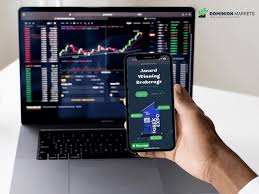
Forex software trading has revolutionized the way traders interact with the foreign exchange market. The combination of advanced technology and strategic insight has allowed both novice and seasoned traders to navigate the complexities of forex markets with greater ease. The evolution of trading platforms has introduced numerous tools and resources, thereby enabling traders to maximize their potential. For instance, forex software trading Trading Uganda is one of the platforms that offer comprehensive tools tailored for traders looking to optimize their strategies.
Understanding Forex Trading Software
Forex trading software consists of the programs and platforms used by traders to conduct trades in the forex market. These tools serve a variety of purposes, from analyzing market trends to executing trades automatically. The rise of such software has democratized trading, providing access to sophisticated tools that were previously only available to professional traders. The technology has evolved from simple order execution systems to complex platforms that offer real-time market data, technical analysis tools, and algorithmic trading capabilities.
Key Features of Forex Software
When choosing forex trading software, it’s important to consider several key features:
- Real-Time Data: Access to live market prices and historical data is crucial for making informed trading decisions.
- Automated Trading: Many platforms allow for automated trading strategies, which can execute trades based on pre-defined criteria.
- User-Friendly Interface: A clear and intuitive interface enhances the user experience, making it easier for traders to navigate the software.
- Analysis Tools: Robust charting tools and indicators help in analyzing market trends and patterns.
- Risk Management: Features such as stop-loss and take-profit orders protect traders from significant losses.
Types of Forex Trading Software
There are several types of forex trading software, each designed to meet the specific needs of traders:
1. Trading Platforms
These are software applications used to access the forex market. Popular trading platforms include MetaTrader 4 (MT4) and MetaTrader 5 (MT5), known for their extensive features and customizability. They facilitate order execution, market analysis, and account management.
2. Charting Software
Charting software allows traders to analyze price movements and trends. This software provides in-depth market analysis tools, enabling traders to identify potential entry and exit points.
3. Signal Providers
Signal software generates buy/sell signals based on market analysis. These signals can be useful for traders looking for guidance in their trading decisions, especially those who lack the expertise to analyze markets themselves.
Benefits of Using Forex Software
The benefits of using forex trading software are plentiful:
- Increased Efficiency: Automation and real-time analysis help traders execute strategies quickly and effectively.
- Data Analysis: Sophisticated algorithms can process vast amounts of data, providing insights that may be missed by human analysis.
- Accessibility: Most software can be accessed from any device, allowing traders to monitor their positions from anywhere.
- Backtesting: Many platforms allow traders to test their strategies against historical data, improving their future trading performance.

Challenges in Forex Software Trading
While the benefits are significant, there are also challenges associated with forex software trading:
1. Technical Issues
Software can sometimes be unreliable, particularly during high-volatility events. Bugs and system crashes can lead to missed trades or erroneous execution.
2. Learning Curve
Despite their advantages, many of these platforms come with a steep learning curve. New traders may find it challenging to understand all the available features and tools.
3. Over-Reliance on Technology
There is a risk that traders may rely too heavily on their software. While technology can enhance decision-making, it is essential to complement it with sound trading principles and market knowledge.
Future Trends in Forex Software Trading
The landscape of forex software trading continues to evolve. Some of the emerging trends include:
1. Artificial Intelligence
AI and machine learning are being increasingly integrated into trading software, allowing for more sophisticated analysis and decision-making capabilities.
2. Enhanced Mobile Trading
As mobile technology advances, trading on smart devices is becoming more prevalent. Software developers are prioritizing mobile-ready platforms to accommodate traders on the go.
3. Blockchain Technology
Blockchain technology is beginning to influence forex trading, enhancing security and transparency in transactions.
Conclusion
Forex software trading represents a significant advancement in how traders operate within the forex market. By leveraging modern technology and innovative tools, traders can enhance their strategies, improve efficiency, and ultimately increase their profitability. As software continues to evolve, staying informed about the latest trends and understanding how to effectively utilize these tools will be vital for success in the competitive world of forex trading.

